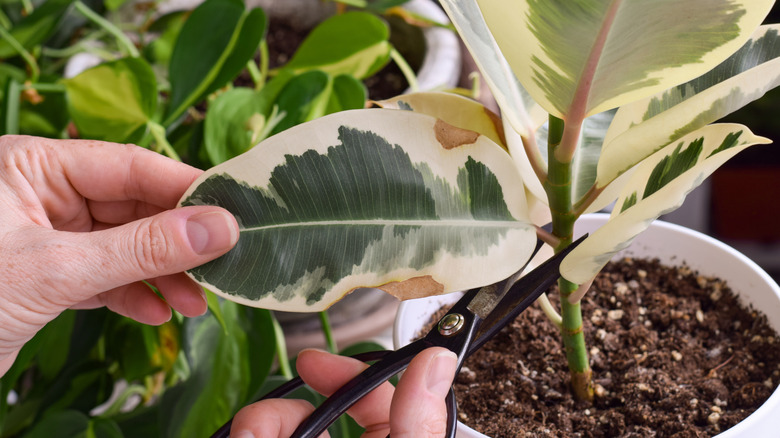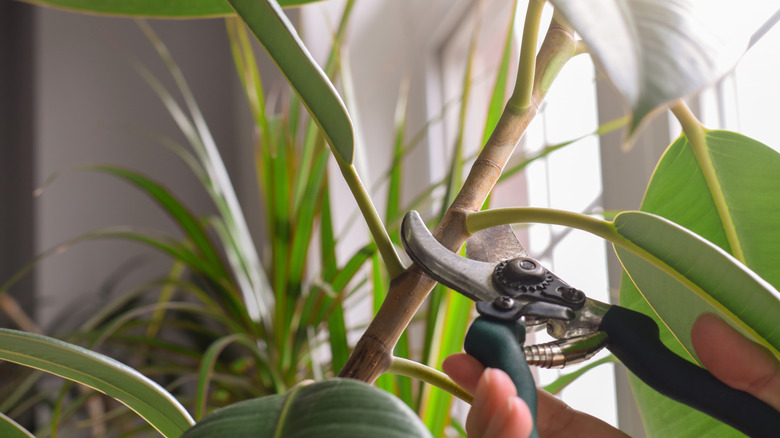The Best Way To Prune Rubber Plants For Fuller, Bushier Leaves
Rubber trees (Ficus elastica) are beginner-friendly plants that can light up your space without the hassle that often comes along with other ficus species. They grow best when given ample indirect light and infrequent but deep waterings. However, while rubber trees can be a low-maintenance indoor plant, you may find that there comes a time when your prized tree looks lackluster. If this is the case for your plant, it may be time to prune your rubber tree.
Many houseplants require pruning, which can encourage new growth, and it's a helpful practice if you want to stay away from leggy plants and foster bushier leaves on your rubber tree. Not only that, pruning can be a great way to improve your plant's overall health, as long as you know the right steps and have the proper tools on hand. As an added bonus, you can propagate any pruned rubber tree branches that are in good health.
For the best results when pruning your rubber tree, you'll need a sharp, clean tool for cutting, such as pruning shears or plant scissors, and gloves to protect against the tree's sap, which can cause skin irritation and be harmful to pets. For bushier rubber trees, you'll need the right pruning strategy, which means cutting right above the leaf node to encourage more branching rather than trimming for height alone or to remove damaged foliage. This can lead to more branches, more leaves, and thus an overall fuller appearance.
How to prune your rubber tree
The first step to pruning your rubber tree is picking the right time. Some plants that require pruning need this essential gardening chore to be completed at a certain time of the year for optimal results. Otherwise, your plant may suffer from delayed growth. For rubber trees, you want to prune when your tree is growing and well-established. This often aligns with spring or early summer. Whenever possible, avoid pruning your tree while it's dormant or even after repotting. You also want to make sure your shears or other tools are clean before getting started. This means removing any leftover grime or dirt and sanitizing with alcohol or a bleach solution to reduce the spread of disease.
When pruning, you want to cut your rubber tree's branches in specific areas. If you're looking to shape your tree and remove any damaged or leggy branches to encourage full, bushy leaves, use your shears to cut above a leaf node. If you want to see more branching, cut the tip off of a tall, healthy stem. Knowing what you want to achieve and where to cut can help reduce the likelihood of common pruning mistakes. Overall, while pruning your prized tree can be intimidating, rubber trees hold up well to proper pruning, helping provide some peace of mind. You can also opt for light pruning more often to maintain a healthy rubber tree, rather than the occasional heavy pruning that can feel more daunting.

